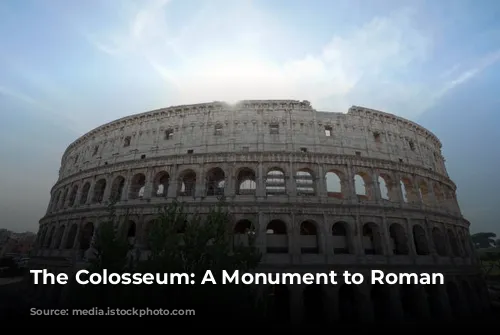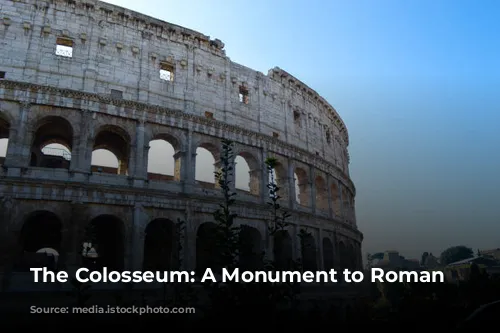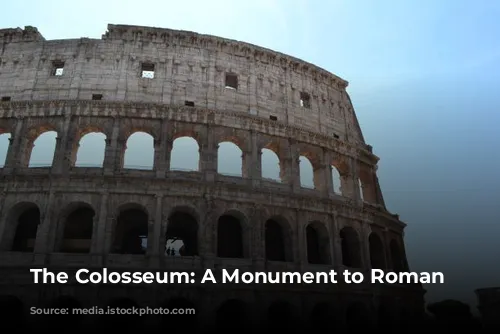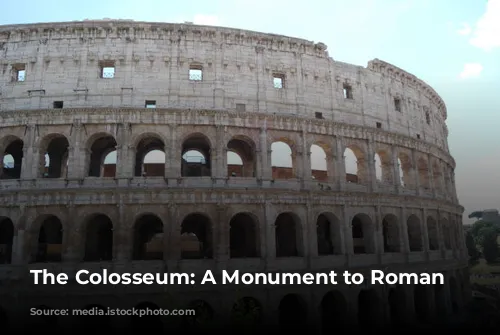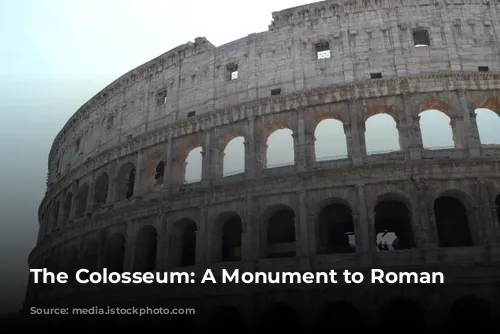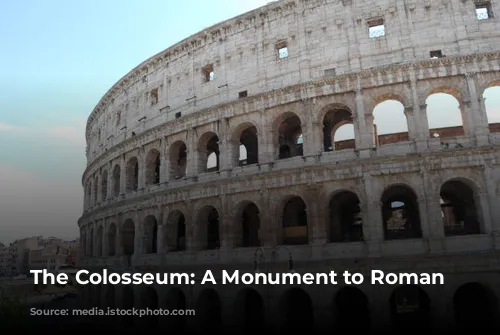Welcome to the Colosseum, a symbol of Roman power and a testament to the engineering prowess of the ancient world. This magnificent amphitheatre, known as the Flavian Amphitheatre in its full glory, stands as a reminder of the glory and brutality of the Roman Empire.
A Legacy of Blood and Spectacle
The Colosseum, the largest amphitheatre ever built, was commissioned by Emperor Vespasian and officially opened by his son, Titus, in 80 AD. The grand opening ceremony spanned a remarkable one hundred days, filled with spectacular shows that included gladiator fights, wild animal hunts, and even naumachia – recreated sea battles that brought the vast arena to life. The sheer scale of the inauguration is mind-boggling – historian Suetonius estimates that 5,000 animals met their demise during those unforgettable days.
The Colosseum’s Name: A Mystery Unraveled
But why is it known as the Colosseum? The name originates from the massive statue of Emperor Nero, known as the Colossus, which stood adjacent to the amphitheatre. Although the statue was destroyed long ago, its influence lives on in the name that has become synonymous with the amphitheatre itself.
A Masterpiece of Roman Architecture
The Colosseum, originally adorned with travertine stone, is an elliptical marvel designed to accommodate a vast audience of up to seventy thousand spectators. Its four floors, each featuring eighty arches, were once adorned with immense statues, a testament to the artistic grandeur of the Roman Empire.
The construction of this monumental structure was a feat of engineering. The Romans were masters of the arch, a technique that allowed them to distribute the weight of heavy constructions effectively. This innovative architectural feature was employed in the construction of the Colosseum, demonstrating the Romans’ remarkable engineering skills and architectural ingenuity.
A Witness to the Rise and Fall of the Roman Empire
Over time, the Colosseum witnessed the glory and decline of the Roman Empire. From public spectacles to quarry for construction materials, the amphitheatre has seen it all. Sadly, much of the original structure has been lost, leaving us with a mere skeleton of its former glory. The missing brickwork and holes in the columns serve as poignant reminders of the Colosseum’s transformation throughout history.
Social Divisions and Spectacular Shows
Entry to the Colosseum was free for Roman citizens, although seating arrangements reflected the social hierarchy of the time. While commoners occupied the upper levels, senators, vestals, and priests enjoyed the best seats in the front row.
The Colosseum featured an ingenious roof covering known as the Velarium, a massive linen tarpaulin suspended by ropes, winches, and wooden poles. This remarkable feat of engineering protected spectators from the scorching sun, allowing for the continuation of the spectacles even under the harsh Roman sky.
A Glimpse into the Underbelly of the Colosseum
Descending into the underbelly of the Colosseum, we can still see the rails of the lifts and hoists used to bring animals and gladiators onto the arena floor. These mechanical marvels served as the special effects of the time, creating dramatic entrances that captivated the audience.
The shows in the Colosseum were a mixture of symbolic and practical, providing a connection between citizens and their leader while offering entertainment and distraction from the political turmoil of the day.
The Brutal Spectacles of the Colosseum
The Colosseum hosted a wide variety of shows, including venationes – fights between exotic animals and men. Public executions were also held, with condemned individuals facing ferocious beasts as their final punishment.
While the cruelty of the Colosseum shows might shock us today, they were widely enjoyed by the Roman population. These spectacles, with their violence and bloodshed, reflected the values and sensibilities of the time.
The Gladiators: Heroes of the Arena
But the most popular show in the Colosseum was undoubtedly the gladiator fights. These skilled warriors were prisoners of war, paupers, or volunteers seeking fame and fortune. They fought in various categories, with distinct weapons and armor, each adding to the drama and excitement of the event.
The gladiators were celebrities in their own right, receiving golden palm leaves and large sums of money for their victories. The audience, in their turn, actively participated in the gladiator’s fate, influencing the emperor’s decision of life or death with their enthusiastic roars and thumbs up or down.
The Enduring Legacy of the Colosseum
Although the Colosseum’s spectacles have long ceased, the monument itself continues to captivate audiences from around the world. This remnant of ancient Rome stands as a powerful reminder of the past and a symbol of the enduring power of the human spirit.
Today, the Colosseum is more than just a historic ruin; it is a sacred monument, a symbol of the suffering of Christians, and a source of spiritual inspiration for many. It serves as a reminder of the beauty and brutality of the past, a testament to the power of architecture and a testament to the enduring appeal of the Roman Empire.
